Equitable Resilience Technical Assistance
Equitable resilience technical assistance provides communities with no cost design and project development assistance, community engagement and partnership development support. The assistance supports disaster-prone communities to plan and design local projects.
On this page:
On other pages:
Background
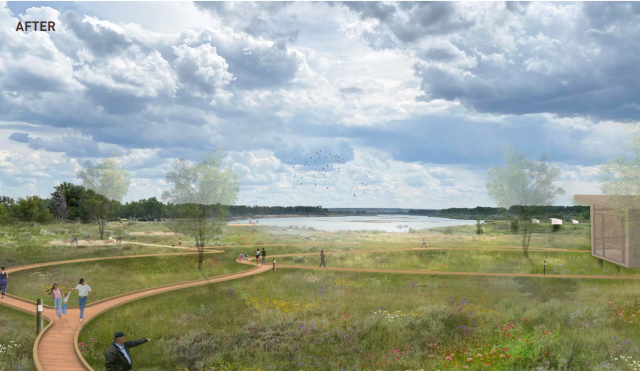
Communities across the United States are facing the effects of extreme weather events in a changing climate. With changes in the frequency, severity and extent of disasters, proactive planning is critical for disaster preparedness and long-term resilience. Planning can help avoid or reduce the negative impacts of extreme events and can help a community recover and rebuild to be better prepared for the future.
Equitable resilience technical assistance serves disaster-prone communities with no cost assistance for site or project design, project development, community engagement and partnership development workshops. With the help of this assistance, communities have designed projects to reduce pollution, increase community climate resilience, and build community capacity to respond to emergent challenges.
Technical assistance supports the development of climate resilience projects, including green infrastructure, park development and/or retrofits of existing community buildings. New construction or renovation designs are used by communities to address climate change impacts such as extreme heat and heat islands, wildfire, smoke, floods, storms or other climate impacts. The climate resilience projects, when implemented, provide multiple benefits for the environment, economy and public health.
Equitable Resilience Technical Assistance Programs
Sixty-five communities have participated in two equitable resilience technical assistance programs - Community Change Equitable Resilience (2021-2022) and American Rescue Plan Equitable Resilience (2023-2024).
Community Change Equitable Resilience (2023-2024)
Community Change Equitable Resilience Technical Assistance provided design assistance and project development support to 61 Tribes, community-based organizations and local governments in 2024. The resulting design solutions sought to address and enhance local resilience to climate risks, such as extreme heat, wildfire, smoke, floods and storms. These projects were designed to reduce pollution, increase community climate resilience and build local capacity to address environmental challenges.
Four of the recipients were selected for funding through the Community Change Grant program.
Communities Selected for Funding
Cass Lake, Minnesota
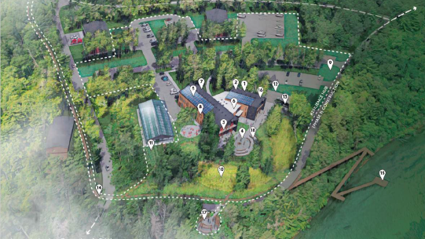
The Leech Lake Band of Ojibwe Tribal Resilience Hub Project will create a Tribal Resilience Hub, located in Cass Lake in northern Minnesota. The Tribal Resilience Hub will provide essential services during an emergency and will be equipped with a rooftop solar and battery storage system. The Tribe will install rain gardens around the hub to reduce flooding and will plant several community gardens. The Tribe also will invest in EVs and multimodal transportation infrastructure, including EV transit vans and electric bikes. This $20 million project, which will also act as a cornerstone of the cultural resilience campus for the Leech Lake Band of Ojibwe, is led by the Leech Lake Band of Ojibwe and supported by their statutory partner Cass Lake Boys and Girls Club.
Fort Myers, Florida

This project will develop four resilience hubs in Fort Myers, Florida that will be the first connected network of resilience hubs throughout Lee County. On ordinary days, these resilience hubs will serve as a resource for disaster planning, community engagement and social services for Lee County.
In times of emergency, they will provide enhanced physical safety and local resources such as electricity, access to backup communications, distribution points for water and food, cooling services in times of extreme heat and emergency healthcare. In addition to resilience hubs, the project will develop a filter marsh and stormwater enhancements to mitigate pollution in Ten Mile Canal and improve water storage and treatment at the headwaters of Ten Mile Canal and Manuel's Branch. The project will also add shade trees to a city-planned extension of an existing walking and biking path along Ten Mile Canal, and support construction and energy workforce development, training, and apprenticeship opportunities through multi-sectoral partnerships. This $19.9 million project is led by Southwest Florida Community Foundation (Collaboratory) in partnership with the Lee County Board of Commissioners.
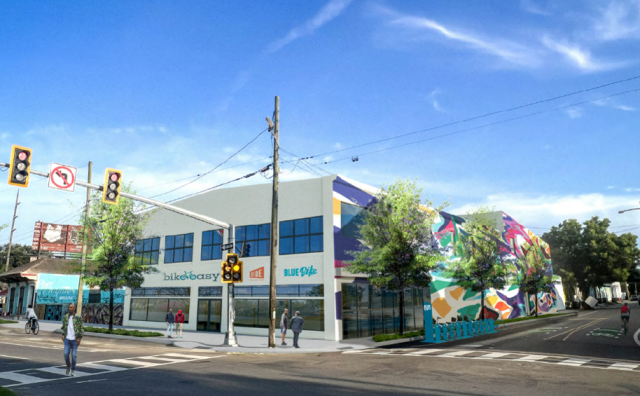
New Orleans, Louisiana
The Stay Ready Solar Project will develop a Resilience Hub in New Orleans’ Upper Ninth Ward to provide crucial support for citizens and emergency responders during a storm or other emergency. The Resilience Hub will be connected via the grid to two new solar farms, also located in the Upper Ninth Ward, which will produce 3MW of clean solar energy, enough to power 1,000 homes. Construction of the solar farms and Resilience Hub will include permeable surfaces to reduce stormwater runoff and enhance groundwater recharge. The project will offer workforce development programs to equip residents with job skills in solar energy, e-bike repair and maintenance, and more. The $20 million project is led by Stay Ready NOLA, Inc. and supported by their statutory partner Metro Bicycle Coalition of New Orleans, Inc.
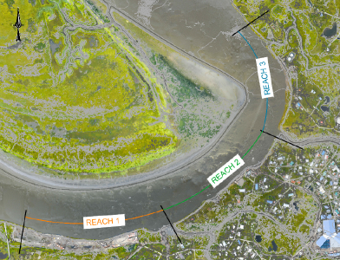
Kipnuk, Alaska
The Kipnuk Riprap Riverbank Stabilization Project will benefit the community of Kipnuk, Alaska, which is located on the southeast bank of the Kugkaktlik River, about four miles upriver from the Bering Sea on the Yukon-Kuskokwim Delta. Riverbank erosion is occurring at a rate of 10 to 28 feet per year, threatening homes, community buildings, the fuel header and bulk fuel tanks, the barge landing, boardwalks, power lines and other critical infrastructure.
The project focuses on adding bank stabilization along Kipnuk's embankment on Reach 3 of the river. This section of the river is at the highest risk of erosion caused by downstream current and sharp bank curvature as water flows to the Bering Sea. This $20 million project will be led by the Native Village of Kipnuk, in partnership with the Alaska Institute of Justice.
American Rescue Plan Equitable Resilience (2021-2022)
In 2021 and 2022, EPA provided design and planning assistance to four state and Tribal governments to plan projects that will build resilience to risks of a changing change, natural disasters and industrial or hazardous materials risk. The Equitable Resilience technical assistance also allowed EPA to work collaboratively to build community capacity to address drinking water issues in four communities, which are described below.
Fort Peck Assiniboine and Sioux Tribes, Montana
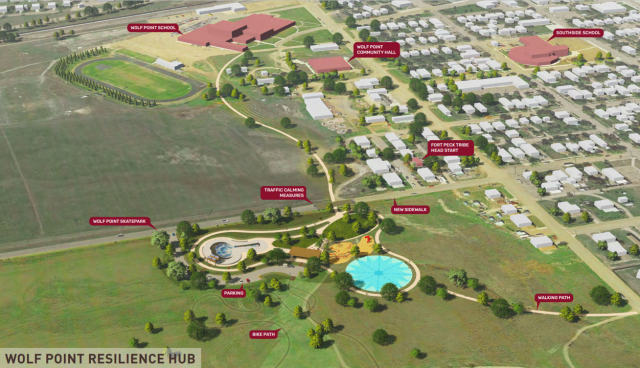
The Fort Peck Assiniboine and Sioux Tribes Reservation is in the far northeast corner of Montana, on the north side of the Missouri River. The technical assistance provided complemented and built upon the Fort Peck Tribes' Hazard Mitigation Plan, using climate change scenarios and local knowledge to plan for projected changes to extreme weather and drought. This assistance also helped the Tribes develop green infrastructure designs, including a resilience hub and redevelopment of a waste transfer site to be a riverfront park. Implementation plans for these designs fit within the updated Hazard Mitigation Plan and offer co-benefits, such as new outdoor recreation options, ecotourism, and space to grow culturally significant plants.
Keweenaw Bay Indian Community, Michigan
Located on the shores of Lake Superior in Baraga County, portions of the Keweenaw Bay Indian Community land are contaminated with waste material from legacy mining and face significant challenges from coastal erosion. EPA partnered with the Keweenaw Bay Indian Community's Natural Resources Department to better understand the impacts of shoreline erosion along Lake Superior, and to develop community-informed conceptual design options for green infrastructure projects that can protect cultural, recreational and infrastructure assets.
Terrebonne Parish, Louisiana
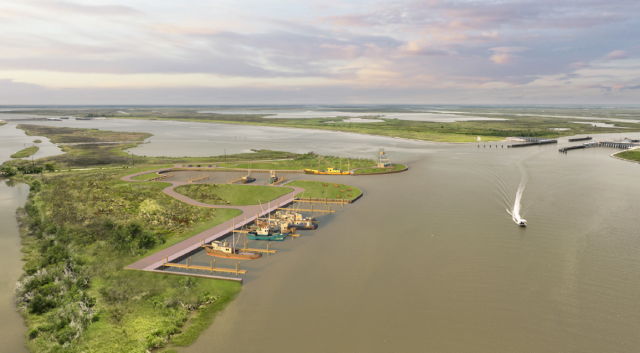
Terrebonne Parish is situated on Louisiana's coast, where sea level rise and subsidence are contributing to land loss and habitat change. Communities are increasingly at risk from hurricanes and other flood events, including from intense rainfall. EPA supported the Terrebonne Parish Consolidated Government, the Pointe-au-Chien Indian Tribe, the Louisiana Chief Resilience Officer, and public, private, and academic partners to develop conceptual designs and specifications for three harbors of refuge for the local fishing industry. The harbors of refuge are meant to offer refuge for commercial fishing vessels during storms and act as resilience hubs for recovery operations after storms.
State of South Carolina
EPA supported the South Carolina Office of Resilience and partners at South Carolina Department of Health and Environmental Control to meaningfully engage low-income, flood-prone communities in the development of green infrastructure designs on voluntary buyout properties. Voluntary buyout properties offer homeowners living in designated areas to voluntarily sell their homes or properties to their municipality and receive up to $250,000, inclusive of incentives. Properties sold through the program become open space that can be enhanced with green infrastructure, such as rain gardens, that infiltrate, store, or absorb stormwater and reduce flooding.
